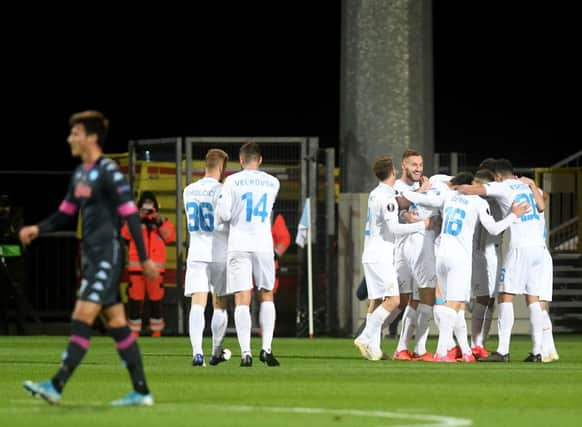Everything you must know about Hibs' Europa Conference League opponents Rijeka ahead of next Thursday's match


History
Formed in 1946 as Sportsko Društvo Kvarner, they were renamed to NK Rijeka in 1954, to originally compete in the Yugoslav league structure before being one of the founders of the Croatian league in 1992. They are the third most successful club in the country’s history.
Stadium
Stadion Rujevica underwent expansion in 2017 despite opening on two years earlier. It hosts just 8,279 spectators though this is enough for Rijeka, who have an average attendance of just under 5,000.
European history
Advertisement
Hide AdAdvertisement
Hide AdAs twice winners of the old Yugoslav Cup, Rijeka first ventured into a major European competition in 1978 with the Cup Winners’ Cup and made it to the quarter-final of the same competition the following year, where they were narrowly knocked out by Juventus.
They had the odd foray into the Uefa Cup and Intertoto Cup, along with some cross-country regional tournaments, but it wasn’t until the turn of the millennium, after the formation of the Croatian top flight in the early 90s, that they began to regularly qualify. They’ve reached the Europa League group stages on four separate occasions and once made it to the play-off round of the Champions League before being eliminated by Olympiacos.
The only Scottish opposition they’ve faced is Aberdeen, which they twice played in Europa League qualifying in the space of four years. They were humbled 5-2 in 2015, including a stunning 3-0 home defeat, but got revenge with consecutive 2-0 victories over the Dons in 2019.
Manager
Goran Tomic hasn’t been in charge long, taking over on March 1, but he’s already made quite the impression on the club. After taking one point from his first two games, he then led Rijeka to nine victories in their final 12 matches, hoisting them back into the European spots with a third-place finish. Previously he was in charge of Lokomotiva for four years, leading them to second place in 2019-20, tying their highest ever finish in the Croatian top flight.
Players
Advertisement
Hide AdAdvertisement
Hide AdThey’ve lost some key figures from last season with goalkeeper Ivan Nevistić and top goalscorer Franko Andrijašević each returning to their respective clubs once their loan deals had ended, while impressive midfielder Stjepan Lončar was sold to Ferencvaros for £2.2 million. They were able to retain Norwich City forward Josip Drmić for another season and he has netted three goals in four appearances thus far this term.
Hibs will have to be wary of the threat posed by right-back Ivan Tomečak. Not only is he one of the more dogged and energetic full-backs in Croatia, he’s arguably the best crosser of the ball in the division – hitting his target over 40 per cent of the time on six attempts per match. He’s a leading source of creativity in this side.
Elsewhere, Adam Gnezda Čerin is one of the better defensive midfielders in the league and remains for another campaign on loan from Nuremberg, while Nino Galović is an imperious centre-back who is also handy on the ball.
Style of play
Tomic has largely preferred a three-at-the-back system since taking charge but isn’t afraid to mix it up with four-man defence variations. Rijeka typically look to hold onto possession, ranking fourth in the league last term and hitting the second fewest long balls.
Message from the editor
Thank you for reading this article. We're more reliant on your support than ever as the shift in consumer habits brought about by Coronavirus impacts our advertisers.
If you haven't already, please consider supporting our sports coverage with a digital sports subscription.
Comment Guidelines
National World encourages reader discussion on our stories. User feedback, insights and back-and-forth exchanges add a rich layer of context to reporting. Please review our Community Guidelines before commenting.